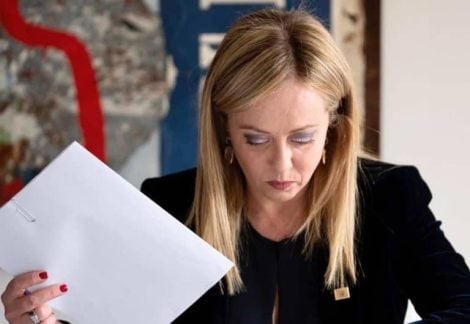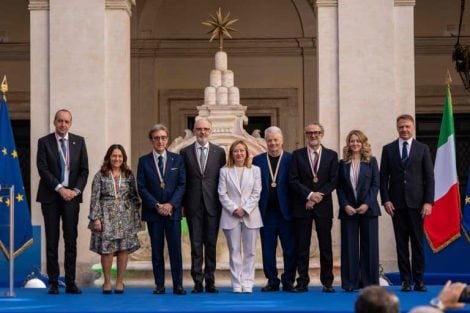Among the stories of the most important international grape varieties, certainly that of Cabernet Sauvignon is one of the most interesting. First of all, because this grape variety is at the base of the most famous Cru Classé of Bordeaux, in the municipalities of Pauillac, Margaux, Saint-Estèphe, Saint-Julien, and Pessac-Leognan. Châteaux Lafite, Latour, Mouton Rothschild, Margaux, and Haut-Brion above all. But also because it is a very ancient story that materializes in a marriage between East and West, which will then give rise to the grape variety.
As Professor Attilio Scienza states in his stimulating book "The Lineage of Wine", when we talk about Cabernet Sauvignon, we are dealing with a grape variety capable of "combining rusticity, that is, the ability to produce regularly in very different environments, and excellence, thanks to the qualitative characteristics of its grapes".
But what does the marriage between East and West have to do with it? We mentioned it to try to trace the origins of this grape, currently cultivated all over the world. From a genetic point of view, the parents of Cabernet Sauvignon are Cabernet Franc and Sauvignon. And if we wanted to go even further back in the family tree? Well, then we should refer to the ships of Greek merchants that docked in southern France, and which probably also carried among their cargoes the plants of those vines from Epirus (more or less present-day southern Albania), characterized by a thick layer of bloom on the skin and an almost tar-like flavor. Arrived in France, inside the Benedictine monasteries, more or less in the Carolingian era, these vines would have crossed with the local domesticated ones, in this case Sauvignon, whose name betrays its "wild" (sauvage) origin.
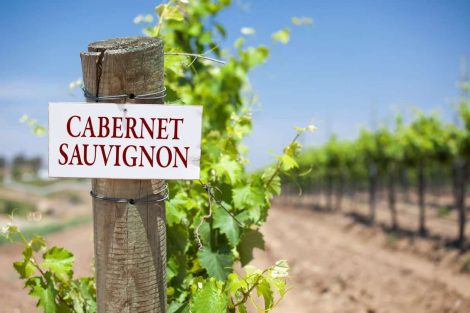
Cabernet Sauvignon is cultivated in many areas of our country. We find it mainly in the north, where it adorns especially the vineyards of Trentino, Alto Adige, Veneto, and Friuli Venezia Giulia, often in the company of Cabernet Franc. But the grape variety is historically present also in Tuscany, and then it spread to all the other regions, reaching even Sicily and Sardinia. In its more ambitious versions, it can produce excellent results even in terms of aging capacity; but necessarily aging doesn't have to be its destiny. It can be used, in fact, to produce more immediate wines, which, however, manage to preserve the varietal characteristics by declining them in fascinating and intriguing nuances.
Cabernet Sauvignon with the best quality-price ratio
In the following list, you will find wines based on Cabernet Sauvignon, but also Cabernet Franc, reviewed in the Berebene 2024 guide, which cost less than 20 euros on the shelves of wine shops and online shops.
Veneto
L'Espero 2021 by Vigna Ròda expresses all the value of the denomination even in the simplest wines. Aromas of plum and spices develop into an energetic and immediately pleasant sip. Nestled on the hills that constitute the western border of the Euganean complex, Gianni Strazzappa's company extends for about twenty hectares within the Regional Park. Here, on the gentle slopes that face the evening, the Bordeaux varieties that have found one of their cradles in this area have lived for almost two centuries. Gianni and his wife Elena follow all the production phases, and in the small cellar of Cortelà, a reliable and high-quality production is carried out.
Il Carega del Diavolo is a blend of Cabernet Sauvignon and Franc that matures in tonneau and large barrels before giving off aromas of red fruit and spices, refreshed by intense balsamic suggestions. On the palate, the wine reveals all the warmth of the territory, highlighting a dense tannic texture that makes it perfect to accompany a winter roast. Cà Salarola, the Zannini family's company, develops in the southern area of the Euganean Hills, near Baone.
We certainly don't discover the value of the Euganean Hills today, but if you desire a simple Cabernet, focused on fruit and at the same time of great richness and grit, try Poggio Ameno from Gardina's house. Matured entirely in cement, it offers an explosive fruit on the nose embellished by the subdued presence of spicy notes. In the mouth, it is full, juicy, and with a consistent drinkability. If you don't have the patience to wait a couple of years, enjoy it with a succulent rare steak. The activities of Quota 101 never stop, with the ongoing viticultural renewal for some years now and the completion of the new cellar, which in addition to spaces for managing all activities, with a significant provision of cement and wood, also offers a splendid tasting room overlooking the owned vineyard slope. In the 16 cultivated hectares, the role of protagonist belongs to the Bordeaux varieties, mainly cultivated in the Baone estate, while the white grape varieties reside around the Torreglia cellar.
The young company Monte Cecilia by Sabrina Tosin extends over eight hectares in one of the most suitable wine areas of the Euganean district, the area of Baone. Here, vines and olive trees vie for the best exposures, and Sabrina makes a Bordeaux blend that expresses all the warmth of the territory on the nose. Ripe plum, medicinal herbs, and spices follow one another in a whirlwind of aromas that find development in an energetic and precious sip.
What the historic company Castello di Roncade has proposed this year is a classic-style Cabernet, played on the presence of vegetal tones that give freshness to the red fruit and on a taste dynamic linked more to agility and dynamism than to power. Perfect for a winter braised dish or, served cooler, for a summer barbecue. Don't be afraid to uncork it; it will satisfy even the most seasoned taster. More than 100 hectares of vineyards on the eastern Venetian plain constitute the viticultural platform accessible to the Ciani Bassetti family's company.
Friuli Venezia Giulia
Caterina and Valfredo represent the latest generation of the de Puppi family, which, from time immemorial, has dedicated itself to the cultivation of owned lands. The merit of the current affirmation in the wine world is due to the foresight of Count Luigi de Puppi who, sensing its potential, at the end of the last century provided for the reorganization of old vineyards, and then entrusted them to the care of the young children. Most of the vineyards surround the manor villa of Moimacco, but the most precious ones extend over the splendid hills of Rosazzo.
Tuscany
Valle delle Stelle 2020, a pure Cabernet Sauvignon, has tertiary notes of leather and tobacco but also sensations of blackberry jam. The taste is smooth, with thin tannins, with a crescendo finale. Giuseppe Brancatelli, Sicilian after seeking fortune in Holland, decided to become a farmer; he looked for a company in Italy to put his dream into practice and found it in Val di Cornia. When the activity started, he moved there, in the 1990s, becoming definitively a winemaker.
Umbria
Sfide is one of the flagship wines of the La Madeleine company and is paradigmatic to understand the philosophy of the cellar. International grape variety (Cabernet Franc) but respect for the territory in which it is grown. A "challenge" well succeeded judging the excellent 2020 vintage. Beautiful Mediterranean aromas and a smooth, deep mouth, with a clean finish and a spicy touch. La Madeleine is the wine project of Linda and Massimo D'Alema, born in 2008 with the acquisition of an old farm of which only the name remains. Now the property is in the hands of Massimo's children, Giulia and Francesco, who can count on just over seven hectares of vineyards. Many are the varieties used, not only the most traditional of the territory but especially those allochthonous that make up the most important wines. The cellar produces wines with an international character, precise, well-made aromatically, and with good general drinkability.

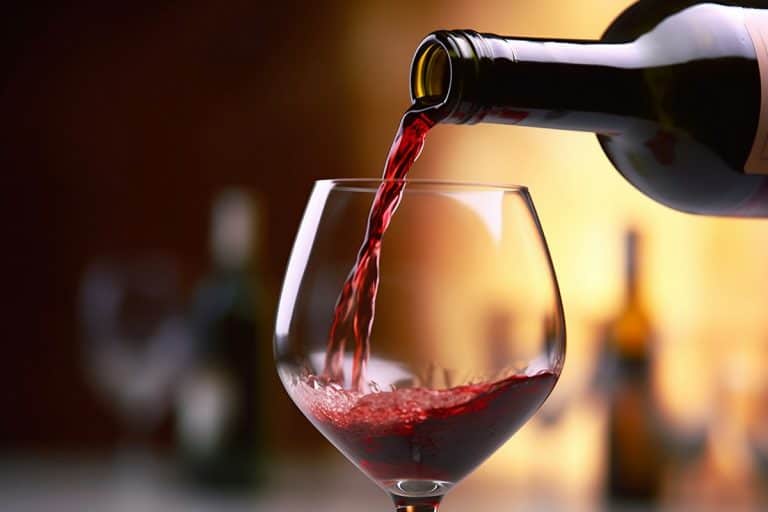
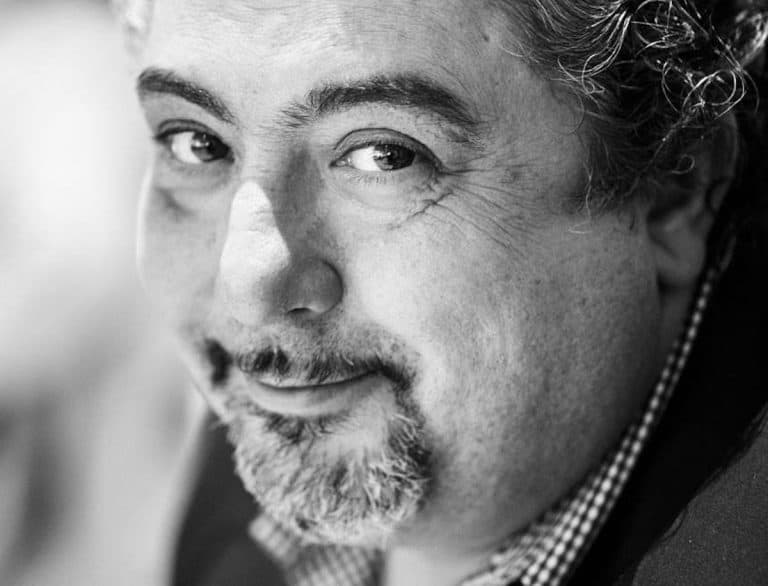 Farewell cacio e pepe in New York. "With tariffs, Pecorino Romano will also become more expensive." The warning from Giuseppe Di Martino
Farewell cacio e pepe in New York. "With tariffs, Pecorino Romano will also become more expensive." The warning from Giuseppe Di Martino Against tariffs? Here are the US foods that could be "hit"
Against tariffs? Here are the US foods that could be "hit" US tariffs: here are the Italian wines most at risk, from Pinot Grigio to Chianti Classico
US tariffs: here are the Italian wines most at risk, from Pinot Grigio to Chianti Classico "With U.S. tariffs, buffalo mozzarella will cost almost double. We're ruined." The outburst of an Italian chef in Miami
"With U.S. tariffs, buffalo mozzarella will cost almost double. We're ruined." The outburst of an Italian chef in Miami "With US tariffs, extremely high risk for Italian wine: strike deals with buyers immediately to absorb extra costs." UIV’s proposal
"With US tariffs, extremely high risk for Italian wine: strike deals with buyers immediately to absorb extra costs." UIV’s proposal